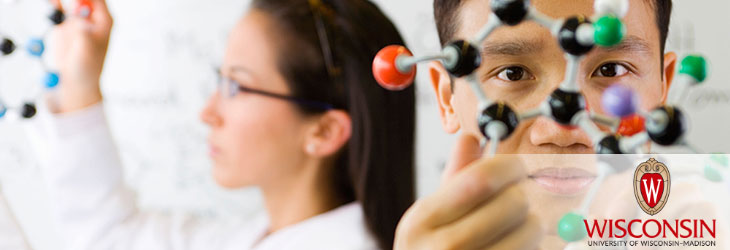Drug Discovery & Development

Enhanced Endotoxin Detection: New Advantages in Liquid Crystal Assays for Gram-Negative Pathogens
WARF: P160072WO01
Inventors: Nicholas Abbott, Abhijit Dan
The Wisconsin Alumni Research Foundation (WARF) is seeking commercial partners interested in developing an improved system for detecting endotoxins in the presence of masking agents such as buffers or surfactants.
Overview
Gram-negative bacterial infections are an ongoing challenge to health care providers worldwide. Detection, treatment and control of such pathogens have gained increasing importance in the context of antimicrobial resistance and emerging infectious disease.
The LAL (Limulus Amoebocyte Lysate) assay, derived from the horseshoe crab, is typically used to detect the presence of Gram-negative bacteria and remains the only FDA-approved approach. While effectively detecting lipopolysaccharides (LPS) or lipid A (endotoxins present on membranes of Gram-negative bacteria) with a high degree of sensitivity, this complex, expensive assay is susceptible to low endotoxin recovery (LER) causing false positive and negative results in the presence of masking agents (e.g., buffers surfactants, cations, proteins, chelating agents and nucleic acids).
UW–Madison researchers previously developed a faster, more sensitive and less expensive method utilizing liquid crystals (LCs). LC droplets in an aqueous solution indicate the presence of endotoxin with a readily observable change in configuration from bipolar (two point defects) to radial (one point defect). This structural change allows for the detection of endotoxins at concentrations as low as 1 picogram per milliliter.
The LAL (Limulus Amoebocyte Lysate) assay, derived from the horseshoe crab, is typically used to detect the presence of Gram-negative bacteria and remains the only FDA-approved approach. While effectively detecting lipopolysaccharides (LPS) or lipid A (endotoxins present on membranes of Gram-negative bacteria) with a high degree of sensitivity, this complex, expensive assay is susceptible to low endotoxin recovery (LER) causing false positive and negative results in the presence of masking agents (e.g., buffers surfactants, cations, proteins, chelating agents and nucleic acids).
UW–Madison researchers previously developed a faster, more sensitive and less expensive method utilizing liquid crystals (LCs). LC droplets in an aqueous solution indicate the presence of endotoxin with a readily observable change in configuration from bipolar (two point defects) to radial (one point defect). This structural change allows for the detection of endotoxins at concentrations as low as 1 picogram per milliliter.
The Invention
UW–Madison researchers have now demonstrated enhanced endotoxin detection in the presence of masking agents in their previous liquid crystal system.
Unlike the LAL assay, the LC-based method does not suffer from LER or any loss of sensitivity due to the presence of cations (e.g., Ca2+ or Mg2+), buffers (e.g., citrate), surfactants (e.g., SDS), chelating agents (e.g., EDTA), proteins or nucleic acids (e.g., DNA or RNA). Thus, the LC-based method provides faster and cheaper detection of endotoxin when compared to existing methods, such as the LAL assay.
Unlike the LAL assay, the LC-based method does not suffer from LER or any loss of sensitivity due to the presence of cations (e.g., Ca2+ or Mg2+), buffers (e.g., citrate), surfactants (e.g., SDS), chelating agents (e.g., EDTA), proteins or nucleic acids (e.g., DNA or RNA). Thus, the LC-based method provides faster and cheaper detection of endotoxin when compared to existing methods, such as the LAL assay.
Applications
- Detection of endotoxin
- Diagnosis of septicemia and other infections caused by Gram-negative bacteria
- Water and food purity testing
- Pharmaceutical manufacturing
Key Benefits
- Reduces false readings and interference by other agents (e.g., masking by buffers and surfactants)
- Increases assay sensitivity
Stage of Development
The development of this technology was supported by the WARF Accelerator Program. The Accelerator Program selects WARF’s most commercially promising technologies and provides expert assistance and funding to enable achievement of commercially significant milestones. WARF believes that these technologies are especially attractive opportunities for licensing.
Additional Information
Related Technologies
- WARF reference number P09241US02 describes the liquid crystal assay previously developed by the inventors for the detection of endotoxin.
- WARF reference number P01228US describes a similar method for detecting gas-phase compounds and environmental contaminants.
- WARF reference number P06126US features a liquid crystal-based method for bioagent detection and recovery.
Publications
- Carter et al. 2015. Synthetic Mimics of Bacterial Lipid A Trigger Optical Transitions in Liquid Crystal Microdroplets at Ultralow Picogram-per-Milliliter Concentrations. Langmuir. 31, 12850-12855.
- Miller D. S. and Abbott N. L. 2013. Influence of Droplet Size, pH and Ionic Strength on Endotoxin-Triggered Ordering Transitions in Liquid Crystalline Droplets. Soft Matter. 9, 374-382.
- Lin I. H., Miller D. S., Bertics P. J., Murphy C. J., de Pablo J. J. and Abbott N. L. 2011. Endotoxin-Induced Structural Transformations in Liquid Crystalline Droplets. Science. 332, 1297-1300.
Tech Fields
For current licensing status, please contact Jennifer Gottwald at [javascript protected email address] or 608-960-9854